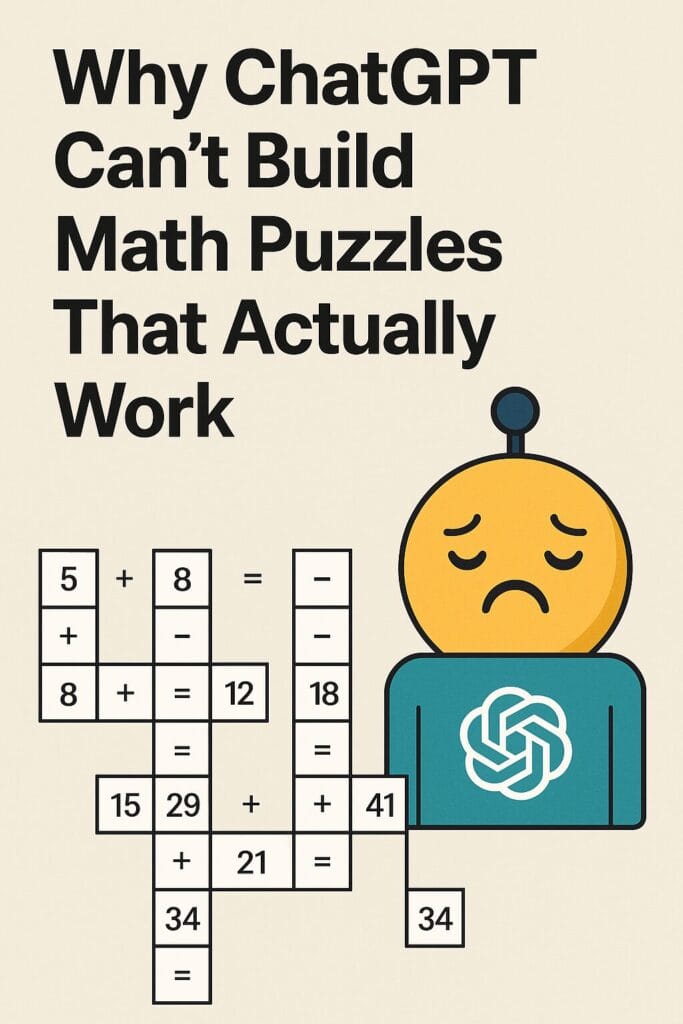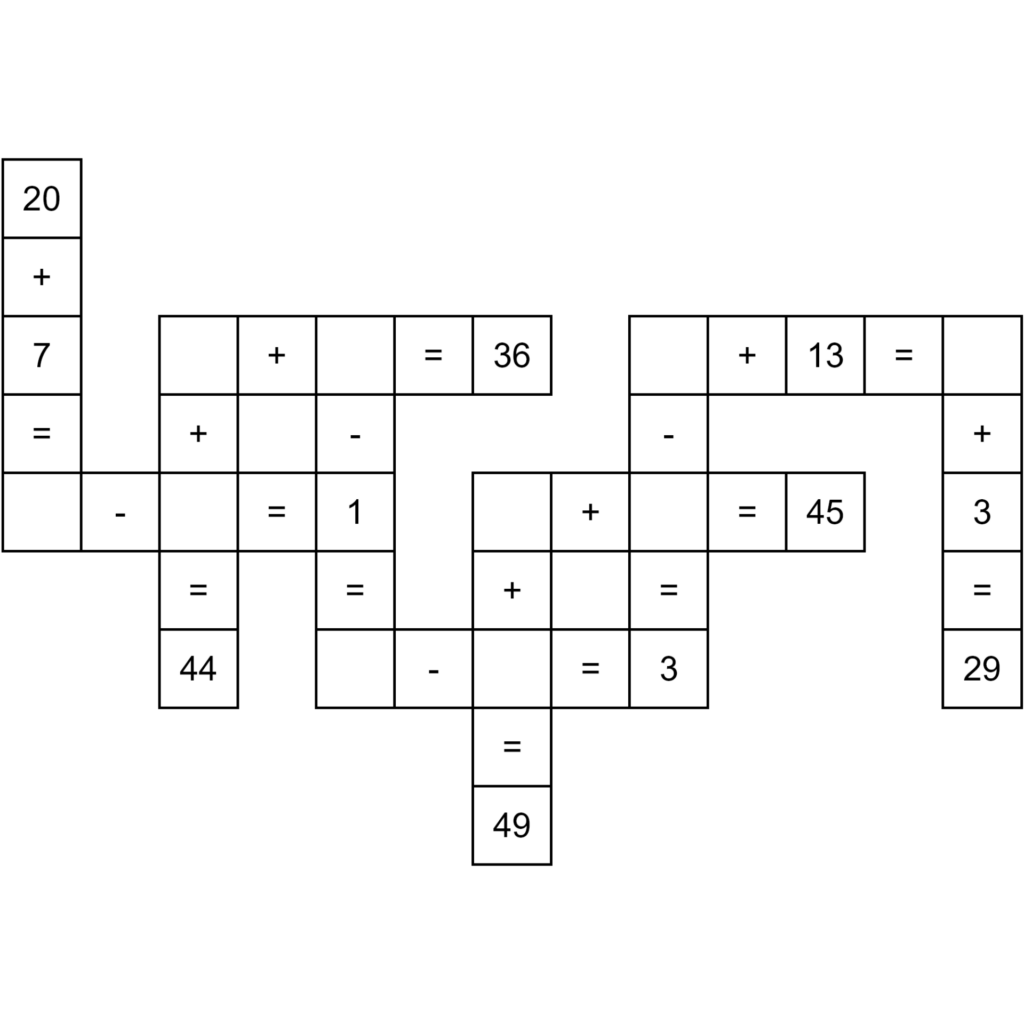Why ChatGPT Can’t Build Math Puzzles That Actually Work
Let’s get this out of the way:
ChatGPT is impressive. It writes solid copy. It outlines blog posts. It even drafts math problems.
But if you’ve ever asked it to generate a full math puzzle — especially a printable one with answers — you’ve probably seen the cracks.
The math breaks. The answers don’t match. The layout falls apart. The formatting is… let’s say “inconsistent.”
Why does this happen? Because math puzzle creation isn’t just about text generation. It’s about logic, layout, and precision.
Let’s unpack why ChatGPT struggles — and why a more specialized approach wins.

1. ChatGPT Is a Language Model, Not a Logic Engine
When ChatGPT writes you a paragraph, it’s not thinking. It’s predicting.
Every word it types is a best guess based on probability. That’s fine for:
- Blog posts
- Product descriptions
- Casual math drills
But when you ask it to build an interconnected grid of math equations that must solve perfectly? That’s when things fall apart.
2. It Has No Spatial Awareness
Try asking ChatGPT to generate a crisscross-style puzzle. It will attempt to simulate the grid… But the numbers won’t line up. The formatting will break across devices. And if you try to paste it into Word or Canva? Good luck.
ChatGPT doesn’t understand layout logic:
- Grid spacing
- Equation alignment
- Visual balance
- Font compatibility
Which means the output always needs human correction. That kills the time-saving benefit.

3. It Can’t Generate and Validate a Solution
Most math puzzle types (especially criss cross or logic grid formats) require:
- Back-end number generation
- Logic checks
- Solution tracking
ChatGPT can draft a few questions. But it can’t auto-generate 50 unique puzzles with verified answers and styled formatting. And it definitely can’t export them as:
- 300 DPI JPGs
- Printable PDFs
- Editable PowerPoints
- Scalable SVG files
It wasn’t designed for that.
And that’s not a flaw — it’s just a mismatch of tools.
So… Is ChatGPT Useless for Puzzle Creation?
Not at all. It’s great for:
- Generating prompt ideas
- Writing puzzle instructions
- Brainstorming puzzle themes or titles
- Helping explain the math concepts behind your puzzles
But for actual production? For building a real printable product? For solving at scale?
It falls short.
What Works Better (and Why)
If you want to:
- Build logic-based puzzle products
- Batch-produce math content
- Export puzzles that look and solve perfectly
You need something built for the job.
Like this:
👉 Criss Cross Math Puzzle Generator
Or test the tools yourself: 👉 Puzzle Maker Pro Demo
Bonus: What a Real Criss Cross Math Puzzle Does
- Every equation links to another inside a shared grid
- Every number connects forward or backward
- Solving one row gives clues for solving the next
It’s not just a list of problems. It’s a logic experience.
That’s what makes it valuable. That’s what makes it printable. That’s what keeps people solving.

Want More?
- Math Worksheets Are Boring. These Puzzles Aren’t.
- This Puzzle Format Flies Under the Radar — But It Outsells Word Searches.
- Not a Designer? Not a Math Teacher? Not a Problem.
Use ChatGPT to write about puzzles. But don’t expect it to build ones that actually work.
